"It's so capable, it can get in and get out:" Developing America's new stealth bomber in Brevard
Locked gray metal doors bar unauthorized visitors from approaching Northrop Grumman's Advanced Avionics Lab, where Melbourne engineers perform secret research developing America's B-21 Raider stealth bomber and other military programs.
"Dept. of Defense Closed Area," reads a sign posted above these badge-entry doors. A security guard is stationed a few footsteps away.
Electronic devices must be left outside on a table beneath a series of wall plaques chronicling global U.S. military conflicts from Operation Desert Storm in 1990 to Operation Iraqi Freedom in 2003 — illustrating the import of this national security research.
Inside, illuminated by soft blue LED lights, black computer workstations line the windowless lab. Behind a glass wall, racks of computer servers are set in a row. In the center of the room, there's a pilot's seat used during flight-simulation exercises.
Here inside Northrop Grumman's sprawling Melbourne campus, engineers continue developing America's next-generation long-range stealth bomber. The B-21 Raider is expected to take its inaugural test flight by year's end.
The bomber will carry nuclear and conventional weapons, playing a key role in U.S. military capabilities and deterrence. Kathy Warden, Northrop Grumman CEO, president and chair, raised the specter of the ongoing wars in Ukraine and Israel last week during an earnings call.
Inside the Advanced Avionics Lab, engineers can run 10,000 high-tech flight simulations per hour, said Zak Upshaw, laboratory program manager, slashing costly real-life test-flight hours and hardware operations.
During a FLORIDA TODAY tour, various monitors inside the secretive lab displayed "Digital Twin B-21" alongside an artist's rendering of the bomber.
"We think of it as, the physical airplane is built in California. And then the software is developed here in Melbourne. And then recently, we merged the software onto the airplane," Doug Young, Northrop Grumman vice president and Strike Program manager, said during an interview in a Melbourne conference room, wearing a black B-21 Raider lanyard around his collared neck.
"And now we have a fully functioning airplane. And now we're in ground testing and getting ready to fly it some time before the end of the year," Young said.
July 2021 story: Northrop Grumman's Melbourne growth boom spurred by B-21 Raider bomber, military tech
B-21 Raider scheduled to fly by year's end
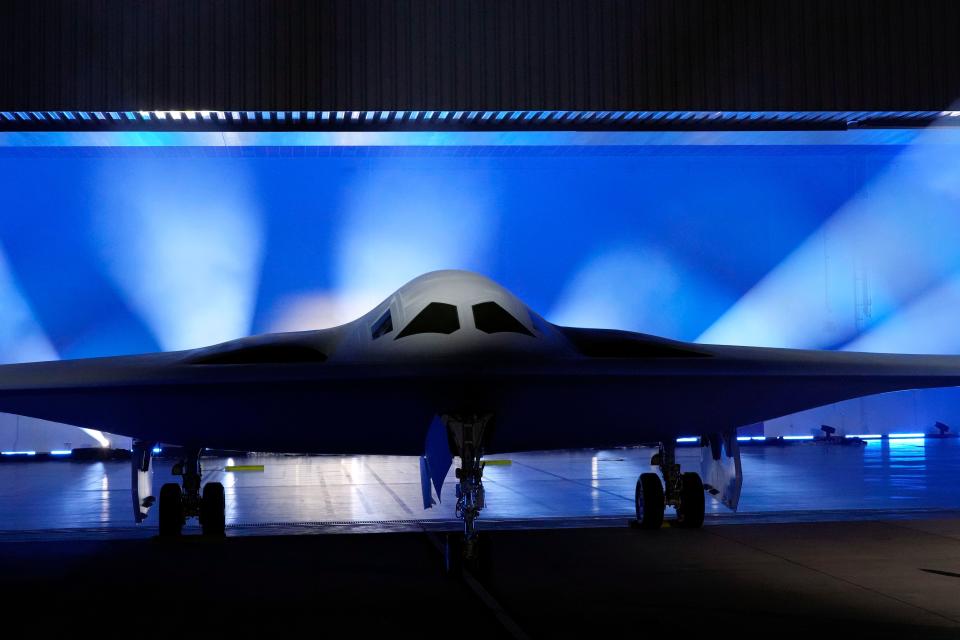
Work in Melbourne on the B-21 Raider — one of the biggest economic development projects in Space Coast history — began after an October 2015 Air Force contract award that triggered a pep rally attended by about 700 people at a Northrop Grumman hangar.
Now, the defense contractor's Melbourne Orlando International Airport campus off NASA Boulevard employs more than 5,000 workers across an array of programs, said Janice Zilch, vice president of multi-domain command and control. And the number of buildings has jumped from six to 17 the past eight years.
Six B-21 Raiders are in various stages of production in Palmdale, California, Young said. In mid-September, Air Force officials announced the aircraft had commenced engine runs "on the path to flight test." Young stressed the importance of the fledgling bomber's ground-based start-up tests.
“That's an integration test where you’ve got the engines running, you're powering hydraulic systems, you're powering the electrical systems, you've got fuel on the airplane, you're managing the fuel — all those things have to play together," Young said.
“You’ve got pilots in there, working off the displays and cockpit interface. So that's the stage we're in right now, and we're going through those steps. Once everyone's satisfied that everything's working well like that, we'll taxi the airplane. And we'll taxi slow at first. And then we'll taxi a little faster," he said.
"Everyone will go through our review process. And then we'll go fly the airplane and head over to Edwards (Air Force Base) and start the process of flight tests. That will go on for a number of years, where we'll start to slowly expand the envelope and understand how the airplane is behaving in the air,” he said.
That first test flight should come by year's end in California, Dave Keffer, Northrop Grumman CFO and corporate vice president, said last week during the company’s third-quarter earnings conference call.
What is a 'sixth-generation' aircraft?
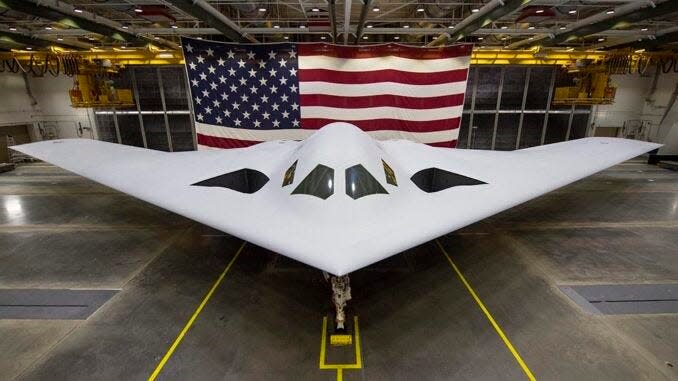
Northrop Grumman marketing materials tout the B-21 Raider as "the first sixth-generation aircraft." What does that mean? Young said the fundamental differences are:
⬤ New and updated stealth technology materials, which have evolved since the days of the aging B-2 Spirit bomber. That aircraft was designed in secret throughout the 1980s, then built from 1987 to 2000.
The Air Force only has 20 B-2 Spirit bombers today, and they were grounded for five months last year after one caught fire after an emergency landing at Whiteman Air Force Base in Missouri, the Air Force Times reported. The B-21 Raider is slated to replace the B-2.
⬤ Digital technology and high-tech computer simulations driving the design process, dating from its earliest stages.
“In the past, we would get from our customers almost literally a Word document that would say, ‘We want you to do these things with the airplanes,’ “ said Henry Cyr, director of multi-domain command and control-capture programs.
⬤ Open mission system architecture. Young recalled frustrations with home computers 10 to 15 years ago, when adding features and devices like printers "took quite a bit of effort to get things to play together."
"Today, things are plug-and-play in the commercial environment. And so, how do you do that in a weapon-system-level implementation so that you can easily add capabilities to a platform? And implement those quickly? And at lower cost in a shorter timeframe?" Young asked.
"That's what we refer to as open mission system architecture," he said.
Little information has been publicly released about the new stealth bombers, and much remains unknown. The B-21 Raider is a classified military program.
John Cain is professor emeritus with the Florida Institute of Technology's College of Aeronautics. A retired U.S. Air Force colonel who served as a USAF Weapons School instructor pilot at Nellis Air Force Base in Nevada, he has flown F-100 Super Sabres, F-16 Fighting Falcons and F-111 Aardvarks.
“The testing environment is something that we've never seen before. They're testing things, and employing and making changes, in short terms — like days — instead of months or even years,” Cain said.
“I'm confident that it's going to be very successful because of the testing program,” he said.
Decade of economic expansion in Melbourne
Northrop's expansion in Brevard extends beyond the stealth bomber.
Last month, Northrop announced a $458 million contract with the U.S. Navy to modernize the E-2D Advanced Hawkeye's cockpit and computing architecture. Crews will start retrofitting the fleet of funky-looking planes in 2029, with work continuing throughout the 2030s.
The E-2D Advanced Hawkeye sports a large round radar dome atop its gray fuselage. Nicknamed the Navy's "quarterback of the skies," the plane serves as a communications-data hub for American warfighters at sea, on land and in the air.
The Melbourne campus will play a critical role in fulfilling this ambitious Navy project. Back in 2013 — when Northrop Grumman only employed 1,218 workers in Melbourne — the company established the Manned Aircraft Design Center of Excellence and moved its E-2D program and personnel here from Bethpage, New York.
Labeled the secretive Project Blue, Northrop's expansion generated 1,268 new jobs, $104 million in real property investment and more than $76 million in tangible property investment, Melbourne City Hall officials estimated.
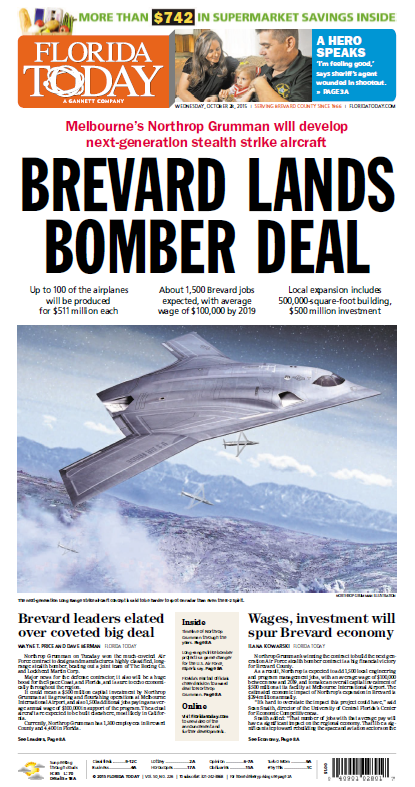
Then in 2014, FLORIDA TODAY broke the news that a new secret initiative, Project Magellan, was Northrop Grumman's bid to invest $500 million in new facilities and develop the Air Force's new stealth bomber.
The defense contractor won that bomber contract in 2015. And Project Magellan has added more than 2,000 jobs since.
“We've been growing by leaps and bounds. We’re over 5,000 employees at this point — and we've gone from six to 17 buildings. So we have 2 million square feet of office, labs, manufacturing space here on the campus," Zilch said.
Zilch said the 11 new buildings were constructed from 2016 to 2022.
Most significant aircraft in past 40-odd years
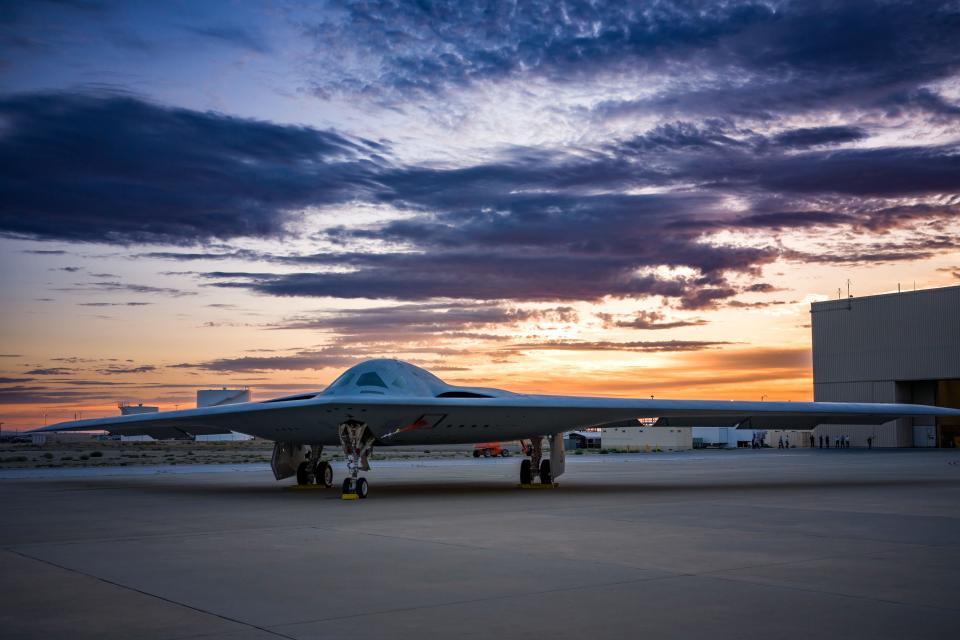
Gen. Duke Z. Richardson commands Air Force Materiel Command. During a speech at last month's Air & Space Forces Association’s Air, Space and Cyber Conference in National Harbor, Maryland, he said the B-21 Raider is key to "outpacing and deterring the People's Republic of China."
"So the B-21's unique because it's probably been about 40, 45 years since we've done something on this magnitude and of this significance," William Ramos, a civilian engineer with the Air Force Nuclear Weapons Center, said during a video presentation at the conference.
"Most of the systems we work on are sustainment activities, and so the deterrent value is already available to the U.S. national defense. With B-21, we're providing a significant improvement in deterrence to our nation," Ramos said.
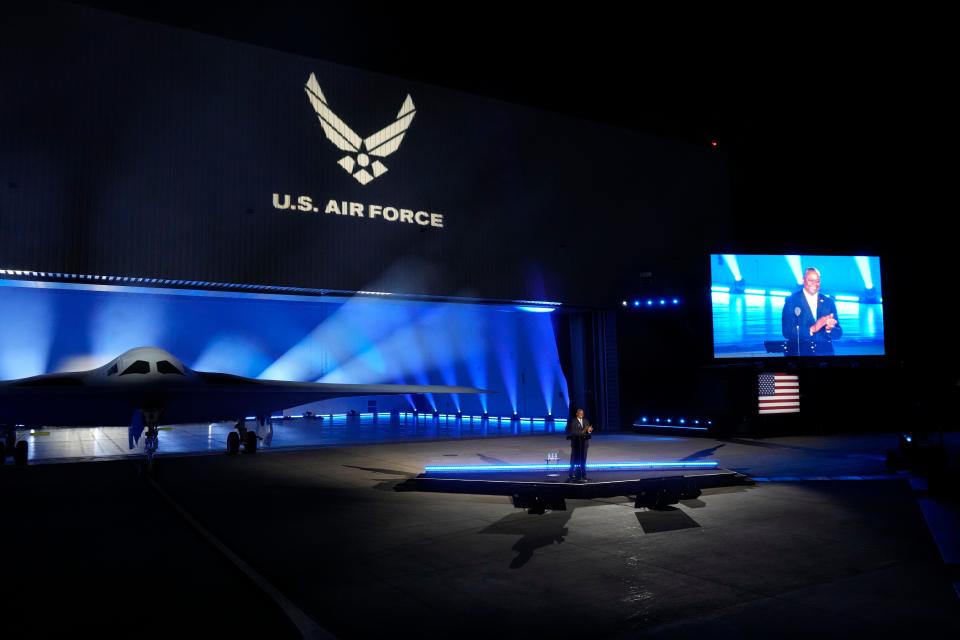
Cain said the B-21 Raider's shape closely resembles the bigger B-2 Spirit because "the aerodynamics of stealth basically dictate that." But inside, he said the stealth bombers are far different animals — and the Raider, which will also carry conventional weapons, will represent "a gigantic boon" to military planners.
“It's going to add to the airborne, air-launched, air-delivered nuclear deterrence vision. Because it's so capable, it can get in and get out. We know that it can penetrate the defenses — there's no doubt about it," Cain said.
"And of course, the bad guys know that it can penetrate the defenses, too. So that's the deterrence aspect of it,” he said.
“I’m hoping and thinking that the test flight is not going to be a big deal. My take is, the simulation and the use of computers in the simulation environment has really just taken away all so much of the threat to the airplane’s capabilities," he said.
“I'm just sure we're going to have a very successful test,” Cain said.
Rick Neale is a Space Reporter at FLORIDA TODAY (for more of his stories, click here). Contact Neale at 321-242-3638 or rneale@floridatoday.com. Twitter/X: @RickNeale1
This article originally appeared on Florida Today: America's new stealth bomber, B-21 Raider, designed in secret Melbourne lab

